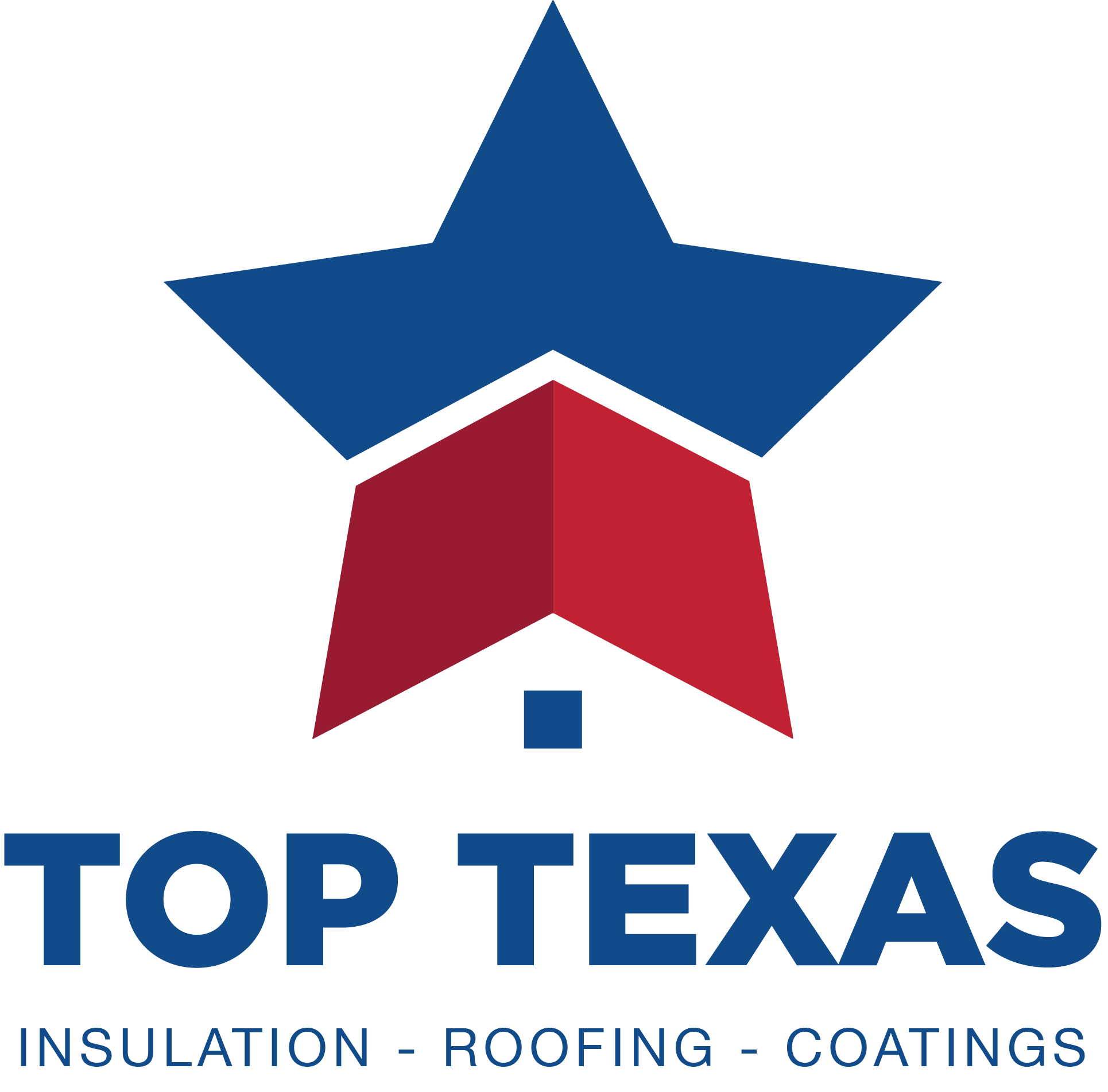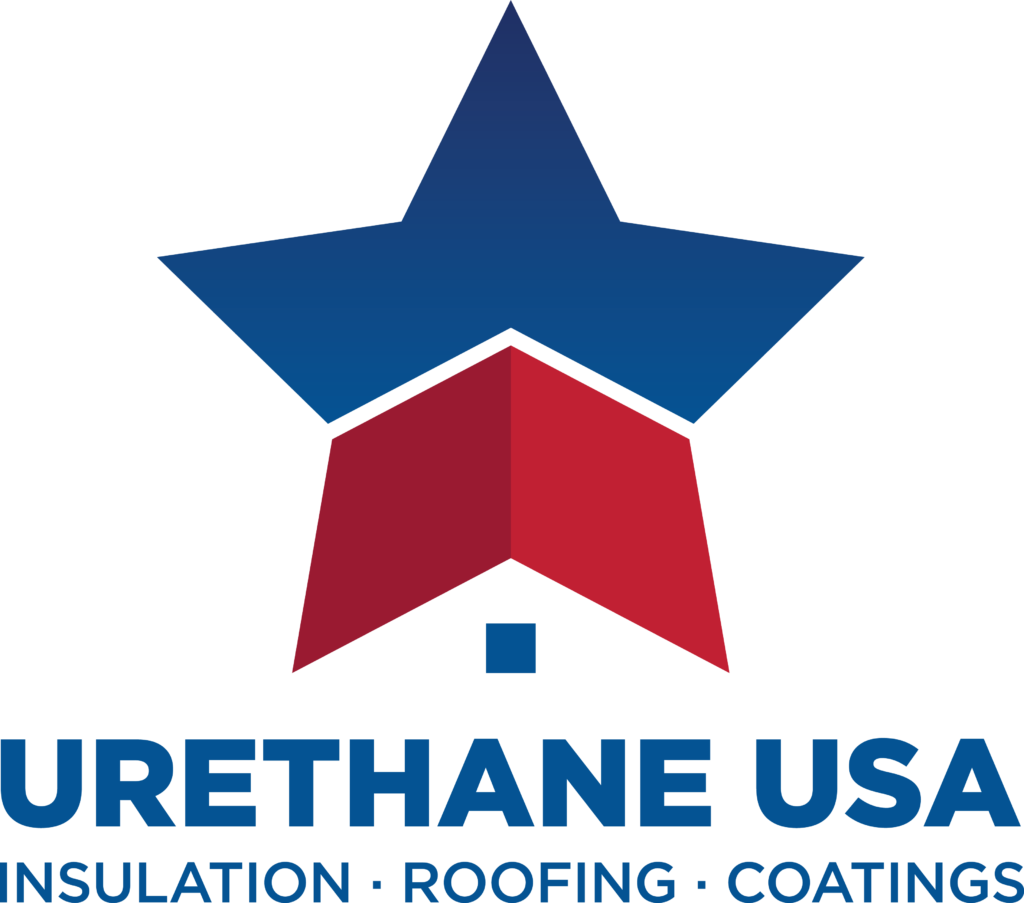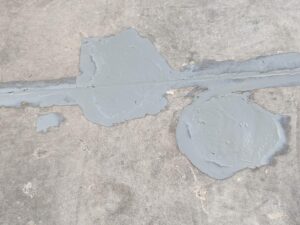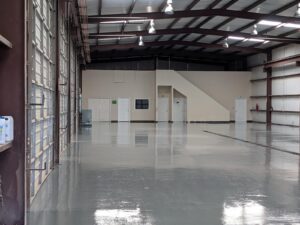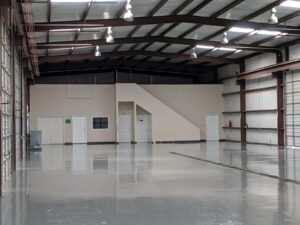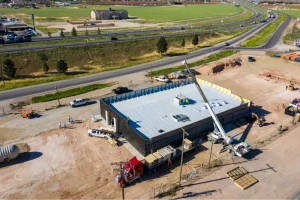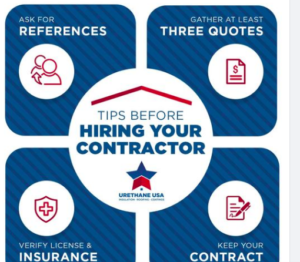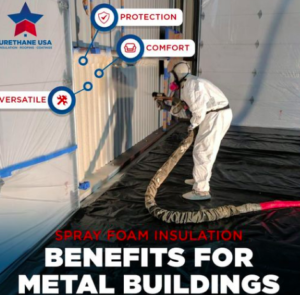Have you ever walked into a factory or warehouse and been wowed by clean and beautiful floors? Instead of standing on dusty cracked concrete, you feel a slick, smart, colored surface. Maybe there’s a logo embedded in the floor? A simple room, warehouse, factory, or storage shed has been transformed as if by magic.
We create this magic. Over the last few years our team at Urethane USA has renovated dozens of floors across West Texas. We’ve renovated floors for warehouses, factories, fitness centers and field offices. We’ve even helped home-owners realize their dream of a personal man-cave or a special garage floors for their custom cars and prize furniture.
Recently we transformed two large warehouses in Midland, Texas. These buildings had their fair share of wear and tear, due to the constant back and forth of oil field equipment and supplies. The concrete surface was uneven, scratched, chipped and torn. It had collected dust and dirt and had become difficult to clean. The space felt unattractive and unprofessional. It wasn’t a workplace you would be proud to show new customers or would inspire the people working there. That is, until we started to work our magic.
Flooring specialists will tell you there are many ways to improve a surface. Many different materials can do the trick. Consequently, we always approach these types of projects with an open mind. There are so many variables in play: What’s the likely traffic flow? What materials and chemicals will be in contact with the floor? What color best suits the building and customer? What’s most important: form or function? What level of maintenance is typical? How long should it last? What’s the budget?
Our Midland client wanted a floor that would look great and last a long time. Some areas would be exposed to chemicals. His cracked and uneven floor needed to be smoothed and polished. This is how we approached this project.
Step 1: Choose the Material
One option for this type of project is polished concrete. It can look good, brighten the building and improve the build-up of dust. But it’s not a good choice if your floor will be exposed to chemicals, dampness, toxins or other contaminants. If your surface is damaged or needs to withstand heavy and continuous traffic or has areas where chemicals might spill, you need to look for alternatives.
One solution we often recommend is epoxy. Epoxy flooring and other resin-based systems come in a variety of formulations that protect the concrete slab in many different environments. Epoxy creates a hard-wearing durable surface that can withstand heavy and continuous traffic. It provides a chemically resistant surface ideal for manufacturing plants, warehouses and industrial applications. If you add anti-slip additives, it also offers enhanced safety and prevents wear and tear on existing concrete floors.
For industrial applications, there are also environmental concerns. Solvents, acids and other chemicals can get absorbed into the concrete slab and sometimes flow through to the soil beneath. Epoxy coatings are resistant to solvents, acids and other chemicals. The chemicals stay on the surface, where they can be cleaned and disposed of.
After considering all these factors and the customer’s needs, we chose specialized epoxy coatings for this project. With epoxy we knew the new floor will be durable and easy to clean. It would resist oil stains and water and create a seamless surface that will last for many years.
For this project, it was the perfect choice.
However, epoxy flooring and other resin-based coatings come in a variety of formulas. Once we chose epoxy for our Midland project, Urethane USA assessed the right formulation and color. Some formulae are designed specifically to protect the concrete slab in tough, heavy usage environments. The correct coating can provide other great benefits, such as
improving the floor’s weight-bearing capacity and impact resistance
protecting against punctures and abrasions
controlling for static and withstanding extreme conditions.
For this project, we believed that specialized epoxy provided better protection than polished concrete. It can mask and correct imperfections in the slab. The glossy topcoat we chose would increase reflectivity, reducing the need for additional lighting and saving energy costs.
Step 2: Preparing the Surface
This is an important but under-appreciated part of all flooring projects. Epoxy needs a clean and slightly porous surface to adhere properly. If the sealed or polished concrete is not fully cured, the epoxy may not bond. Before applying any epoxy coating, we patch and repair all major cracks and chips in the concrete surface and remove all grease.
If the concrete is old, we test the surface to see what, if anything, has been applied before. For example, if water beads on the floor, the concrete has probably been sealed and not suitable for an epoxy coating.
We use machinery to cure the concrete and then patch all the imperfections to ensure a smooth cured surface that can take epoxy. Depending on the state of the concrete, patching can be laborious and time consuming. It must be done thoroughly, otherwise the imperfections will show up in the application phase. If someone quotes a cheap price for your flooring project, it’s probably because they are not prepared to spend the necessary time on this crucial phase of the project.
In our recent Midland project, the concrete in both warehouses needed patching. This took almost two days in each warehouse to complete. But it was an essential part of making the magic happen.
Step 3: Priming
Depending on your choice of material, you might need both an epoxy primer and finisher coat. The primer is applied like paint and must be allowed to settle for several hours before the epoxy goes on.
To apply the primer, we cover the floor with a thin layer of water, and then spread the primer with a roller pin on a pole, making it a thin layer over the entire floor. After the primer dries, we apply a second coat. Then we again look for imperfections in the floor. Sometimes we even re-cure areas and then re-apply more primer.
Step 4: Coating
Once priming is complete and the floor starts to shine, we apply the Epoxy Floor Coating in the chosen color. In our recent Midland project, our client chose a gray glossy finish. This shiny high-gloss surface that can significantly increase the brightness of interior areas.
Epoxy is a two-part liquid that needs to be mixed before application. Once the product is mixed, we have a limited time to apply the epoxy coating before it starts to harden. We also ensure that the temperature is appropriate for the formulation, as recommended by the manufacturer.
If the temperature is not in the right range, the epoxy can bubble and peel.
Applying the coating is much more than rolling it on. As parts of the floor dry, we constantly check as to quality and finish. Sometimes we need to go back to the prime and repair phase because the surface still isn’t ready. It’s an art that requires experience and judgement. Always we are looking to make the surface as perfect and blemish-free as possible.
Step 5: Finishing and Special Sections
Just as no building has one single use, few floors require a standard one-size-fits-all application. There are always areas that have higher traffic, greater potential of chemical exposure or where special materials or equipment will be stored or parked. Sometimes there’s a central or entrance area where you need a logo, parking spaces market or attention drawn. We specialize in providing this too.
The last step in creating the perfect floor is to let the material dry and then carefully assess the surface. Are flaws in the concrete minimal and hardly visible? Does the epoxy show an impressive and uniform shine? Are special areas properly coated and marked? Is the surface strengthened in the right areas? Once we’re happy with all of these, the project is finished.
Here’s the final pictures from our large warehouse project in Midland. From the before and after, you can see how the magic happened, how the building was transformed.
Making floors look great and last a long time is both an art and a science. If you choose the right material for the job, prepare the surface correctly, prime, coat and finish with care and attention, the dirtiest, dustiest factory or warehouse floor can be transformed just like this one. Our team at Urethane USA have the know-how, experience and expertise to make this happen. We love to create this practical magic!
